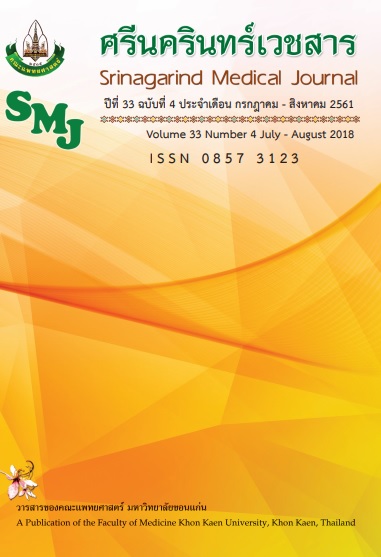Incident Related to Anesthesia at Tertiary Care University Hospital
Keywords:
critical anesthesia incidents; morbidity; mortality; perioperative complications; risk managementAbstract
Objectives: The purpose of this study was to detect critical incidents involving anesthesia over a one-year period. We identified the magnitude of each incident, factors leading to that incident, and how it could have been prevented.
Methods: A prospective, descriptive study was conducted between February 2015 and January 2016. A standard incident report form was completed for every critical anesthesia incident occurred; these reports were then audited.
Results: From among the 19,163 cases of anesthesia, there were 236 incidents (123:10,000, 95% CI 108.5-139.8). Most frequently, incidents involved patients under 1 year (approximately 120:10,000). Most commonly, incidents occurred among those with a classification of ASAII (38%), among those undergoing elective surgery (71.4%), and during the intraoperative period (65.5%). Incidents related to the airway (27.5%) were the most common; including desaturation (11.0:10,000) and aspiration (6.3:10,000). The second most common type of incident involved the cardiovascular system (24.6%). The rate of cardiac arrest was 25.6:10,000 with a respective mortality of 15:10,000. The factors associated with a lower number of incidents were vigilance (29.5%) and staff experience (22.1%). The corrective strategies suggested were used for quality assurance activities in 35.4% of cases, and practical guidelines were developed in 31.3% of cases.
Conclusion: Most common anesthesia incidents were incidents related to the airway and cardiovascular system. The critical anesthesia incident report is a useful tool for better understanding and prevention of perioperative events accompany with continue quality improvement.
References
2. Saito T, Wong ZW, Thinn KK, Poon KH, Liu E. Review of critical incidents in a university department of anaesthesia. Anaesthesia and Intensive Care 2015; 43: 238–43.
3. Webb RK, Currie M, Morgan CA, Williamson JA, Mackay P, Russell WJ, et al. The Australian Incident Monitoring Study: an analysis of 2000 incident reports. Anaesth Intensive Care 1993; 21: 520–8.
4. Choy CY. Critical incident monitoring in anaesthesia.CurrOpinAnaesthesiol 2008; 21: 183–6.
5. Flanagan JC. The critical incident technique.Psychol Bull 1954; 51: 327–58.
6. Hutchinson A, Young TA, Cooper KL, McIntosh A, Karnon JD, Scobie S, et al. Trends in healthcare incident reporting and relationship to safety and quality data in acute hospitals: results from the National Reporting and Learning System. QualSaf Heal Care 2009; 18: 5–10.
7. Boonmak P, Boonmak S, Sathitkarnmanee T, Chau-In W, Nonlhaopol D, Thananun M. Surveillance of anesthetic related complications at Srinagarind Hospital, KhonKaen University, Thailand. J Med Assoc Thai 2005; 88: 613-22.
8. Munting KE, Van Zaane B, Schouten ANJ, Wolfswinkel L van, Graaff JC de. Reporting critical incidents in a tertiary hospital: a historical cohort study of 110,310 procedures. Can J Anaesth 2015; 62: 1248-58.
9. Amucheazi, Ajuzieogu O. Critical incidents during anesthesia in a developing country: A retrospective audit. Anesth Essays Res 2010; 4: 64-8.
10. Charuluxananan S, Narasethkamol A, Kyokong O, Premsamran P, Kundej S. Study of Model of Anesthesia Related Adverse Event by Incident Report at King Chulalongkorn Memorial Hospital. J Med AssocThail 2011; 94: 78-88.
11. Gupta S, Naithani U, Brajesh SK, Pathania VS, Gupta A. Critical Incident Reporting in Anaesthesia: A Prospective Internal Audit. Indian J Anaesth 2009; 53: 425-33.
12. Ali MA, Siddiqui K, Munshi K, Abbasi S. Critical Incidents in Post Anesthesia Care Unit (PACU) at a Tertiary Care Hospital: A Prospective Internal Audit. J AnesthClin Res 2014; 5: 486. doi:10.4172/2155-6148.1000486
13. Short TG, O’Regan A, Lew J, Oh TE. Critical incident reporting in an anaesthetic department quality assurance programme. Anaesthesia 1993; 48: 3–7.
14. Dutton RP. Improving Safety Through Incident Reporting. Curr Anesthesiol Rep 2014; 4: 84-9.
15. Wallace L. Feedback from reporting patient safety incidents--are NHS trusts learning lessons? J Health Serv Res Policy 2010; 15(Suppl 1): 75–8.
16. Cooper JB, Newbower RS, Long CD, McPeek B. Preventable Anesthesia Mishaps. Anesthesiology 1978; 49: 399–406.
17. Mahajan RP. Critical incident reporting and learning. Br J Anaesth 2010;105:69–75.
18. Vincent CA. Analysis of clinical incidents: a window on the system not a search for root causes. QualSaf Health Care 2004; 13: 242–3.
19. Tewari A, Sinha A. Critical incident reporting: Why should we bother? J Anaesthesiol Clin Pharmacol 2013; 29: 147-8.



